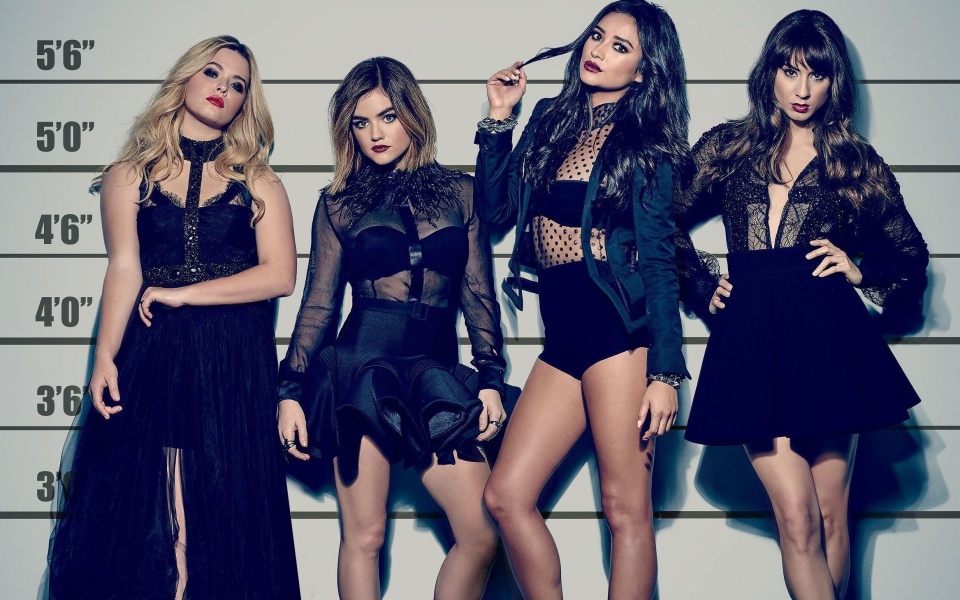Pretty Little Liars vs. Pretty Little Liars

Allyson Floridia ’16 / Emertainment Monthly Staff Writer
Books inspire movies, movies inspire books, books inspire television shows, and so on, all in an endless loop of recycled material. While many of these adaptations disappoint fans of the original stories—whether it’s because of poor character portrayal, set design, or plot changes—there are some that are successful. This usually happens in either of two ways: they become wholly independent from their predecessor or they bring the material to life exactly as is envisioned in a display of remarkable performance, direction, music, and art. One of the most successful teen shows that does the former is Pretty Little Liars.

Originally published by HarperTeen in 2006 by author Sara Shepard, this suspenseful teen drama took off when it was picked up by Freeform, previously ABC Family, in 2010. Now in its seventh, and final season, Pretty Little Liars proves to be a hallmark of successful book to television series adaptations. It’s clear from the first season that I. Marlene King, the scriptwriter for Pretty Little Liars, was taking its audience on a whole different journey.
Right off the bat, audiences are introduced to the four main characters: Aria, Spencer, Hanna, and Emily. Fans of the book, though, may have been scratching their heads when the actresses appeared on screen. In the novels, Hanna, Emily, and Spencer are blondes while in the show they are brunettes. While it’s not uncommon to have actors with different colored hair or eyes as their characters did in the books, it is the first indicator that the producers may be attempting to do something different. At the same time, many fans of the show argue that the actresses portray the characters’ personalities perfectly.
Next is the introduction of new characters and the reconstruction of others. The girls’ beaus, friends, and enemies are different in some way, whether their storylines are extended (Ezra, Mona, and Toby) or they’re original inventions entirely (Caleb and Paige). Viewers of the show no doubt have cheered on the writers for following a different path as the girls’ relationships are one of the biggest reasons why audiences still watch the show.

Then there are the plot changes. Suffice to say, the television show veers wildly off the path of the book series. In the books, Ali disappears and her “body” isn’t found until three years later. In the TV show, she’s only been missing a year before A’s text messages begin. In the books Ali is A, while in the TV show she’s framed as A. She also has a twin, Courtney, in the book series, while Charlotte/Cece/Charles is revealed to be her sibling in the TV show.
And of course there’s the dollhouse, another creation by the show’s writers. The PLLs plus Mona are trapped here for several months and undergo serious psychological trauma. Much of their future character arcs are influenced by their time there.
The seventh season of the show proves to have the biggest deviation from the book series as everything is complete invention by the script writers and does not appear in the books at all. Here, they return to Rosewood five years after leaving for college to face another, more dangerous A. Charlotte, who’d been convicted as A, has been murdered upon her release and the PLLs have to figure out who killed her before the new A decides to get rid of them. Possible uber As include Noel Kahn, Jenna Marshall, and Sara Harvey. A plot twist introduces Jessica DiLaurentis’s sister, Mary Drake. Mary Drake is Charlotte’s mother, and, if episode 10 proves to be true, she is Spencer’s biological mother as well. Since the writers have prolonged the lives of Ezra, Caleb, Mona, and Paige, all of these characters also have their own plot lines that didn’t appear in the books.

All of this coalesces to a whirlwind of drama and suspense. While the show has been hit hard with criticisms, and while there’s no doubt that Pretty Little Liars is not the most artistic, inventive, or amazing piece of television out there, it certainly is addictive, emotional, and overall, a fun time. With all of the changes the script writers and directors made, Pretty Little Liars the television show is entertainment wholly separate from its source material. It’s one example of how television and literature can be interpreted in numerous ways.